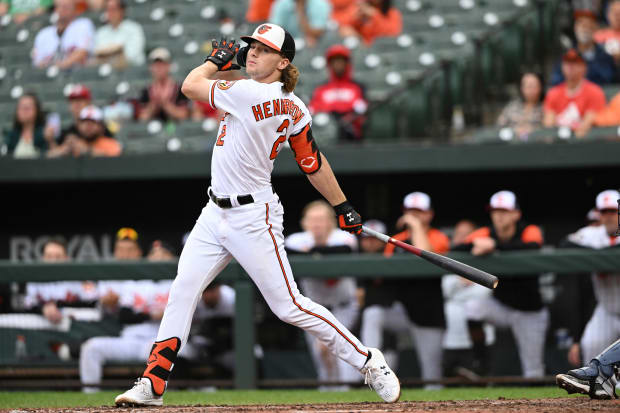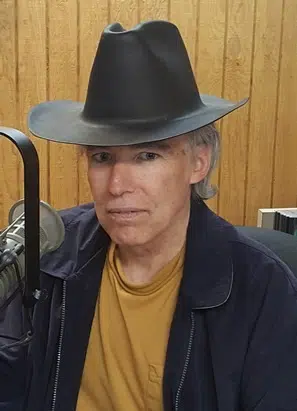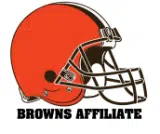What we’ve seen and heard so far, including the Orioles’ abundance of talent at shortstop and players who have reported to camp in tip-top shape.
In the era without shifts, few teams have as much athleticism and interchangeable parts as the Orioles. Their roster includes four natural shortstops who can play multiple positions (Jorge Mateo, Gunnar Henderson, Joey Ortiz and Jordan Westburg), a Gold Glove third baseman who also can play shortstop and second base (Ramón Urías) and two second basemen who can also play the outfield (Adam Frazier and Terrin Vavra).
“I think we’re going to have an extraordinarily active spring training in terms of guys playing and getting their footing at positions where maybe in the past they didn’t put a lot of time in,” GM Mike Elias says. “We look at this group and see lefty and righty, almost everyone can play three positions; everyone has strengths and weaknesses. … There are a lot of combinations. It may depend on who we’re facing on the mound, who’s rested, who’s healthy. … You might see different combinations most nights.”
Henderson is the best of the bunch. He is Corey Seager with elite speed. Baltimore manager Brandon Hyde plans to give Henderson time at third base and shortstop this spring.
“We’re going to have depth on the club and in Triple A,” Hyde says. “The more I watch Joey Ortiz, the more I see a special defender. Jordan Westburg can really play. I really like his ability to play multiple positions. I really like [outfielder] Colton Cowser. All are extremely athletic and strong, and I like the makeup of all three guys.”

Gail Burton/AP
Shifts in strategies
There was plenty of talk about workarounds to the anti-shift rules, such as shifting the offside outfielder into the rover position. If it happens, it will be an extreme rarity.
“We’ve thought about it,” says one executive. “And there may be a time or two where you might do it, but those are going to be very, very rare situations. I’m not expecting to see it much.”
Say an extreme pull hitter like Joey Gallo is up with the bases empty, especially with two outs, in a trailing situation. You might go to the “outfield shift” because Gallo is swinging for extra bases, you want to defend the pull side and you want to tempt Gallo to get outside his comfort zone. Gallo had eight extra-base hits all of last year, half of which were mishit balls.
But those are narrowly defined moments. And even then, it might not be worth the risk. With left field left uncovered, one of those mishit balls becomes two or three bases, a huge gamble especially in a one-run game.
Will Sanó find a landing spot?
Anybody want a 29-year-old former All-Star who hit 34 home runs three years ago and has a career average exit velocity of 93.1 mph? Apparently not. Camps are open, and Miguel Sanó does not have a job.
Sanó first must prove to teams that he is healthy after right-knee injuries limited him to just 20 games last year for Minnesota. He’s working on that. Having already held a hitting workout for clubs this month, Sanó has progressed to running the bases this week. He expects to sign with a club this week with the intention of being ready physically for Opening Day.
After Sanó hit 34 homers in his age-26 season, the Twins signed him to a three-year, $30 million extension. He hit .207 through the life of that extension while striking out in 37% of his plate appearances. If somebody can find a way for Sanó to make more contact, the upside is large. Sanó has ridiculous power, but among active players ranks as the fourth-worst career two-strike hitter (.129), behind Gallo (.101), Austin Hedges (.124) and Mike Zunino (.126).
Contenders for the annual “Best Shape of My Life” award
- Daniel Vogelbach of the Mets, who dropped about 20 pounds; Luis Severino of the Yankees, who was described by manager Aaron Boone as being in “elite shape right now.”
- Lucas Giolito of the White Sox, who lost 35 pounds and said carrying less weight “is important as you get older” (he is 28).
- Hunter Strickland of the Reds, described by manager David Bell as looking like “a different person” with a leaner physique.
- Jonathan Schoop of Detroit, who professed to not knowing how many pounds he dropped from his 247-pound playing weight last year.
- Triston Casas of Boston, who lost about 20 pounds and said, “I’m in the best shape I’ve ever been in.”
- Martín Maldonado of the Astros, who lost 17 pounds.
- Jonathan India of the Reds, who dropped 10 pounds.
Kipnis calls it a career
Congrats to Jason Kipnis upon his retirement for an outstanding 10-year major-league career. He grew up in Northbrook, Ill., hitting imaginary home runs in his backyard with a bat and acorns, dreaming of hitting a World Series home run 21 miles away at Wrigley Field.
He grew up rooting for Sammy Sosa during the great 1998 home run chase, lived down the block and rode the same school bus as Steve Bartman, and attended Glenbrook High North, the alma mater of director John Hughes, who used the school as a backdrop in Ferris Bueller’s Day Off, which included the famous day of playing hooky at Wrigley.
Kipnis hit a dream home run—and what might have been one of the most famous home runs in Cleveland baseball history—in Game 4 of the 2016 World Series. Kipnis smashed a three-run homer, this time for real with no acorns, to blow open a close game and put
Cleveland one win away from winning the World Series for the first time since ’48. It was the first three-run World Series homer by a visitor at Wrigley since Babe Ruth hit his “called shot” in ’33.
The next day Cleveland led 1–0 in the fourth inning of the possible clincher before Trevor Bauer coughed up three runs. Cleveland never held another lead while dropping three straight games.
Kipnis retires as one of only five left-handed-hitting second basemen with 125 homers and 125 steals. The others are Chase Utley, Lou Whitaker, Joe Morgan and Charlie Gehringer. Kipnis made two All-Star teams, hit 126 homers, had 1,147 hits, 1,833 total bases, a 102 OPS+ and earned $53 million. Jed Lowrie made one All-Star team, hit 121 homers, had 1,185 hits, 1,874 total bases, a 102 OPS+ and earned $60 million.
In 2020, Kipnis finished his career as a Cub.
Who was that umpire again?
With the passing of Tim McCarver, a cute story made the rounds. Future broadcaster Brent Musburger was behind the plate when McCarver played his first professional game at age 17 in 1959 in the Class D Midwest League for Keokuk. Cute, but not likely true.
A fellow by the name of George Morrison of Brighton, N.Y., told the Rochester Democrat and Chronicle back in 1989 that he worked the plate that night. Morrison remembered meeting McCarver, bags in hand, entering the clubhouse that day. He also said he remembered McCarver had a habit of bobbing up and down while catching pitches, so Morrison hooked a thumb behind the back of his belt to keep him from blocking his view.
Morrison served in World War II as a U.S. Army weatherman in Panama.
Musburger did umpire in the Midwest League—after leaving Northwestern after his freshman year. He said he needed to find another career after blowing a home run call in 1958 as the second base umpire with Michigan City, Ind., righthander Juan Marichal on the mound.
Musburger said he ejected three players in the ensuing argument and needed a police escort out of the ballpark. As Musburger said in 1978, “It was that point in my young life that I decided to go into sportswriting because I could use the eraser when I made a mistake.”
In 1985 he told The Dallas Morning News he had an offer to umpire the next season in the Eastern League, but returned to Northwestern to be a sportswriter.


















